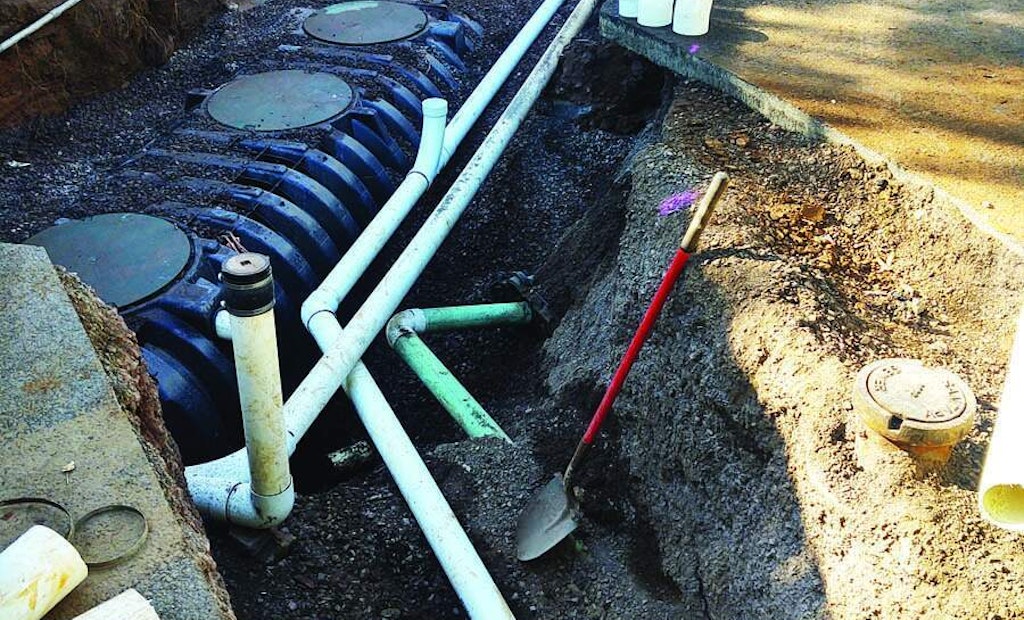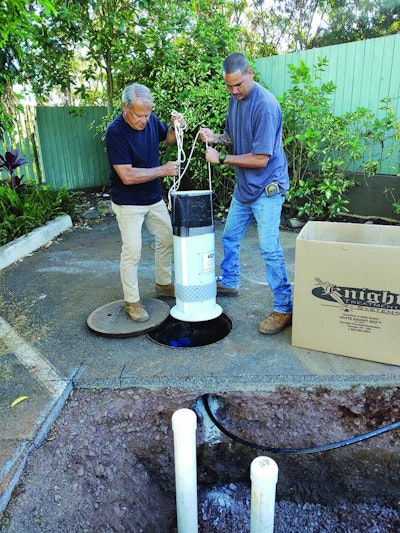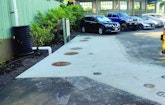
Mike Cowper and Kris Magaellous worked for two weeks to hammer out this 20-by-8-by-10-foot-deep excavation. The pretreatment tank with three White Knight Microbial Inoculator Generators (Knight Treatment Systems) is in front of the Fuji Clean aerobic treatment unit. (Photos courtesy of Mark Noga)
Only 18 months after a small, two-story commercial building opened in October 2017, its 1,000-gpd drainfield failed. The building held offices and retail spaces in Hale‘iwa, Oahu, Hawai‘i.
Samuel Morton of Gecko Enterprises pumped the septic tank every other day for six...








